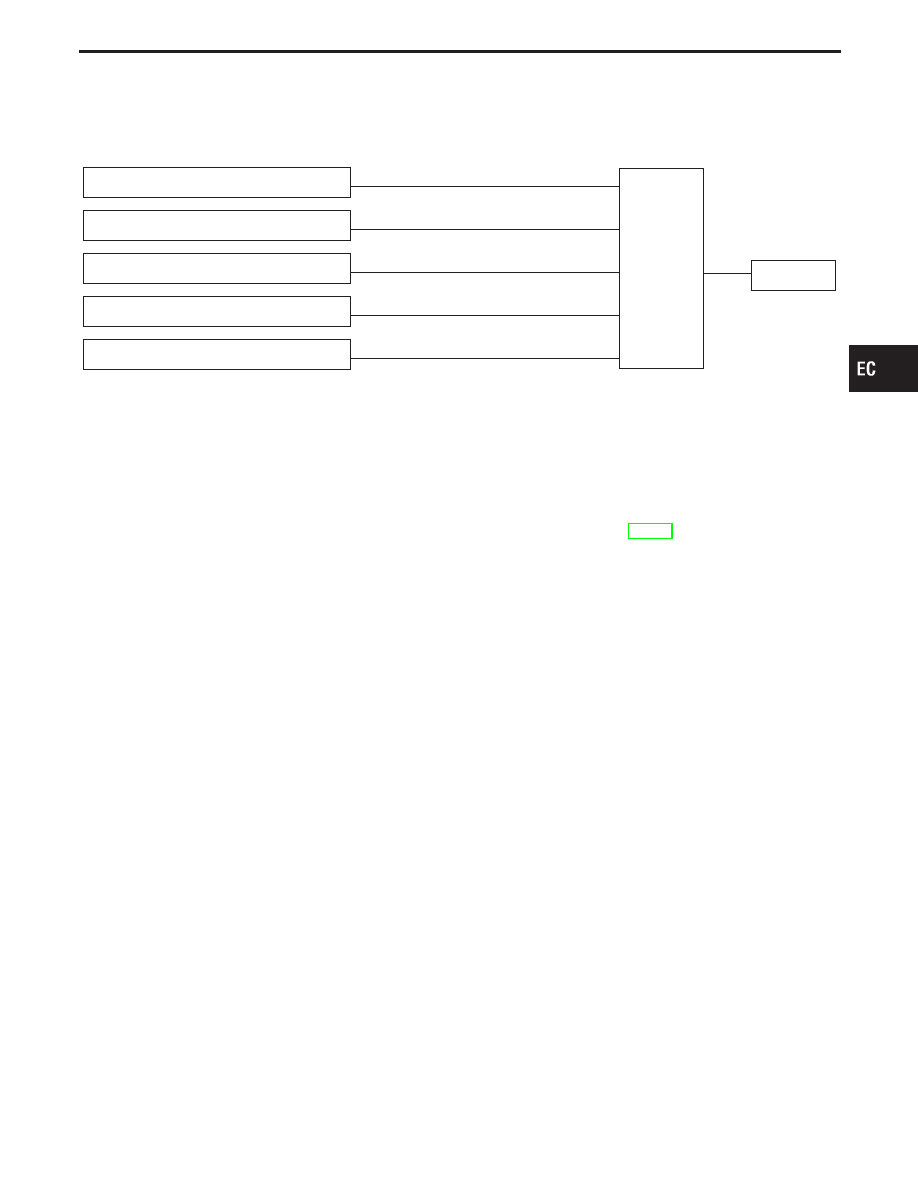Infiniti Q45 (FY33). Manual - part 124

Fuel Cut Control (at no load & high engine
speed)
INPUT/OUTPUT SIGNAL LINE
Vehicle speed sensor
E
Vehicle speed
ECM
E
Injectors
PNP switch (TCM)
E
Park/Neutral position
Throttle position sensor
E
Throttle position
Engine coolant temperature sensor
E
Engine coolant temperature
Camshaft position sensor
E
Engine speed and piston position
If the engine speed is above 1,400 rpm with no load (for example,
in neutral and engine speed over 1,400 rpm) fuel will be cut off after
some time. The exact time when the fuel is cut off varies based on
engine speed.
Fuel cut will operate until the engine speed reaches 1,000 rpm,
then fuel cut is cancelled.
NOTE:
This function is different than deceleration control listed
under multiport fuel injection on EC-21.
GI
MA
EM
LC
FE
AT
PD
FA
RA
BR
ST
RS
BT
HA
EL
IDX
ENGINE AND EMISSION BASIC CONTROL SYSTEM DESCRIPTION
EC-25